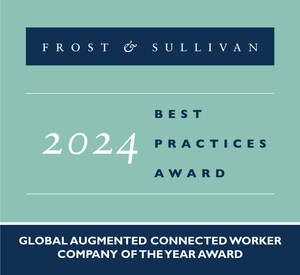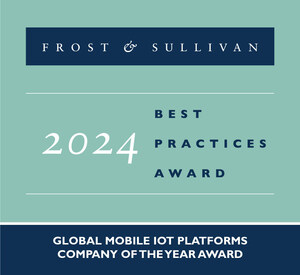Autonomous Vehicle Developers Bet on Sensor Fusion Solutions and L2+ Features
By 2030, one in four cars sold globally is expected to be automated (L3 and above), finds Frost & Sullivan
SANTA CLARA, California, Aug. 12, 2019 /PRNewswire/ -- 2018 was a year of technological advancements in the autonomous driving (AD) market with a focus on shared mobility platforms, consolidation of electrical/electronic (E/E) architecture, and greater integration of AI in every aspect of AD. In 2019, the industry is witnessing significant progress in driverless technology, with developments in enhanced sensor solutions, L2+ deployment and tele-operations. Developing and deploying L4 and L5 vehicles will take time, hence, L2+ features are expected to be pushed by original equipment manufacturers (OEMs) and Tier 1 suppliers to add to the value proposition in the ADAS market. By 2030, one in four cars sold (18 million) globally is expected to be automated (L3 and above), with L4 leading the growth.
For further information on this analysis, please visit: http://frost.ly/3oj
"Sensor fusion will be a major aspect of autonomous vehicle development. The transition from discrete sensor processing to sensor fusion will be through either raw sensors or smart sensors based on E/E architecture," said Ayan Biswas, Mobility Senior Research Analyst, Frost & Sullivan. "Meanwhile, the introduction of L2+ and L3 features will create opportunities for the integration of multicore advanced driver-assistance systems (ADAS) domain controller. This will reduce the architectural complexity and weight on the chassis by decreasing the amount of wiring and facilitating high-speed communication and data transmission."
Frost & Sullivan's recent analysis, Global Autonomous Driving (AD) Industry Outlook, 2019, highlights key market and technology trends shaping future prospects. On the business front, the research dives deeper into the impact of autonomy, focusing on ways to monetize and personalize data as the industry evolves. On the technology front, the study focuses on developments required at the platform level to add redundancies, fuse sensory data and build the necessary computational ecosystem. Along with trends, the outlook forecasts share of vehicles by levels of autonomy.
"AD will not only focus on ways to generate revenues through new downstream services, it will also affect traditional business models with the adoption of mobility platforms. The industry is expected to shift from ownership to usership, as it progresses toward L5 autonomy," noted Biswas. "Vehicle platforms need to be designed considering the mechanical and electrical redundancies to ease scaling to L4/L5 in the future."
Forward-looking OEMs will aim to tap additional growth opportunities by:
- Actively investing in start-ups predominantly focused on autonomous software and service sectors.
- Differentiating themselves through superior safety and ADAS features.
- Introducing sensor platforms focused on sensor fusion and AI. This will help capture road data accurately and judiciously.
- Focusing on L2+ features deployment.
- Fostering cross-collaborations between OEMs and suppliers, resulting in lower development cost and improved solution scalability.
Global Autonomous Driving (AD) Industry Outlook, 2019 is part of Frost & Sullivan's global Automotive & Transportation Growth Partnership Service program.
About Frost & Sullivan
For over five decades, Frost & Sullivan has become world-renowned for its role in helping investors, corporate leaders and governments navigate economic changes and identify disruptive technologies, Mega Trends, new business models and companies to action, resulting in a continuous flow of growth opportunities to drive future success. Contact us: Start the discussion.
Global Autonomous Driving (AD) Industry Outlook, 2019
ME99-18
Contact:
Francesca Valente
T: +1 210.348.1012
E: [email protected]






Share this article